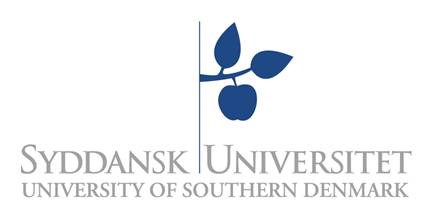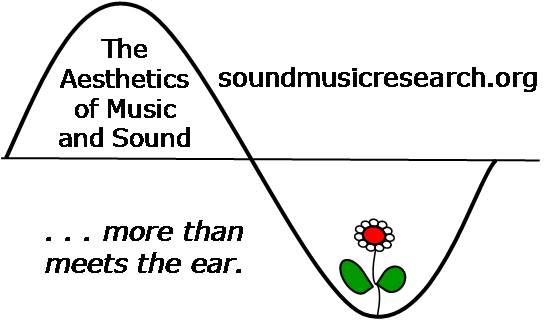|
Project Descriptions

4. Practice-based Research
e) Soundmapping the Genes
- as characterized by Fredrik Søegaard, Assistant Professor, The Academy of Music and Dramatic Arts, Southern Denmark (AMDA), NNIMIPA Coordinator, AMDA
www.myspace.com/zoegaard2
www.soundmappingthegenes.com
SOMATHEGE is a research project working with the use of biological data in musical composition and improvisation. A specially developed MIDI interface translates the complete genetic code of the H1 histonin protein of the rainbow trout. This interface can produce a melody from the code but it can also act as a controller of electronic music-equipment. The projects output is presented in an ongoing series of concerts and the project has also been subject to several trans-disciplinary workshops, where SOMATHEGE has been discussed by various boards consisting of biologists, musicians, datalogists, philosophers, etc.
A research report describing the translation and background has appeared in JMM: Journal of Music and Meaning at http://www.musicandmeaning.net/issues/showArticle.php?artID=8.5. Here is the introduction from that research report:
“Art is the sedimentation of human misery.” (Adorno 2004).
The above remark by Adorno implies that art has its own way of preserving human experience, using a metaphor from geology and zoology, as well as its own languages for so doing (painting, musicmaking, sculpturing, etc).
Biology also has its own way of preserving some of the information about living beings and a language for so doing – the DNA coding sequences present in all biological beings.
SMTG is a project involving music composition and improvisation based on biological data – the complete DNA genetic code of the H1 Histonine protein of the rainbow trout.
Nature has always been one of the dominant aesthetic ideals for artists of any art form. Painters have used nature in their work from cave paintings up until our day, and composers and musicians have dedicated numerous works to the celebration of nature (see Adorno 2004).
In music, however, there is an ongoing discussion regarding exactly how nature is relevant in a musical context. What does a sunset sound like? Or a sea?
In 1986 Japanese-American Biologist Susumu Ohno from the Beckman Research Institute of The City of Hope, Duarte, California, created a system for composing music from DNA code sequences, transcribing the four nucleotides into the diatonic scale according to a set of rules formulated by Ohno (Ohno 1986). SMTG is a contemporary project in this tradition, using the DNA coding sequence from one protein of the rainbow trout to form e.g. the melodic structure, the rhythmic, the dynamic, etc. Structures in the 642-nucleotide-long H1 Histonine protein code sequence are transcribed into the chromatic scale and transferred into the MIDI (Musical Instruments Digital Interface) language. Thus the code sequence can be used as a chromatic melody or as MIDI information, controlling chosen musical parameters in electronic and digital environments. In this way, nature itself can appear as a ‘controller’ – via pitch or MIDI information – of the music in the form of the structural characteristics of the genetic code sequence. In addition to providing pitch information and creating melody and/or MIDI information to control electronic parameters, this complete H1 Histonine coding sequence also brings a specific form to the music, as this coding sequence is different from every other existing sequence.
Adorno, T. W. (2004). Aesthetic Theory. London and New York: Continuum.
Ohno, S. & Ohno, M. (1986). “The All Pervasive Principle of Repetitious Recurrence Governs Not Only Coding Sequence Construction but Also Human Endeavor in Musical Composition”. Immunogenetics 24, 71-78.
. . . and the music can be seen/heard on the homepage: http://www.soundmappingthegenes.com
Fredrik Søegaard, Claus Gahrn

(Click here to return to Projects page.)
|
|

Institute for the Study of Culture
Institut for Kulturvidenskaber (IKV)
Research Director for
The Aesthetics of
Music and Sound
and
Editor and Webmaster for
www.soundmusicresearch.org:
Cynthia M. Grund
cmgrund@sdu.dk

Projects
(For descriptions, please click on the tabs at the top of the page.)
1.Understanding Music through Modern Technology
a) Recognizing Music
b) Recognition of Expressive Styles in Music Performance
c) Autonomous Agents – An Accompanist in VR
d) The Composition and Its Role in the Ensemble
2. Intermediality
a) Intermediality
b) Lyric and Meaning in Music
c) Towards an Aesthetic Theory of Correlativity
d) Are Treatments of the Metaphysics of Music in Medieval Literature Relevant for Current Theories of Musical Meaning and Significance?
3. Learning through Music
a) Music Communication
b) Children's Knowledge Creation with Intelligent Agents in Music Education - Understanding for Optimizing Motivations
c) Adaptable Interfaces & Augmented Avatar - Introducing Tools for the Disabled and Musicians in VR
d) Community Singing and/or Ideology
e) Creating Creativity
f) Understanding Musical Creativity and Aesthetics in a Digital-Based Youth Cultural Context
g) The Sound of Movement - the Sound of Learning
4. Practice-based Research
a) Analysis and Implementation of Practice-Based Research
b) Relationship of Gesture to Communicative Authenticity in Performance
c) Musical Implications of the Work of Selected Philosophers
d) Employing the Methods of Discourse Narrative to Support Interpretive Choices Faced by the Practicing Musician
e) Soundmapping the Genes
f) A Program of Practice-based Research Designed to Examine Listener Reaction to Olivier Messiaens Vingt Regards sur l'Enfant Jesus
g) The Interrelationship of Notation and Performance
h) Technological and Aesthetic Investigations of the Physical Movements of Pianists
5. Selective Bibliography

| |